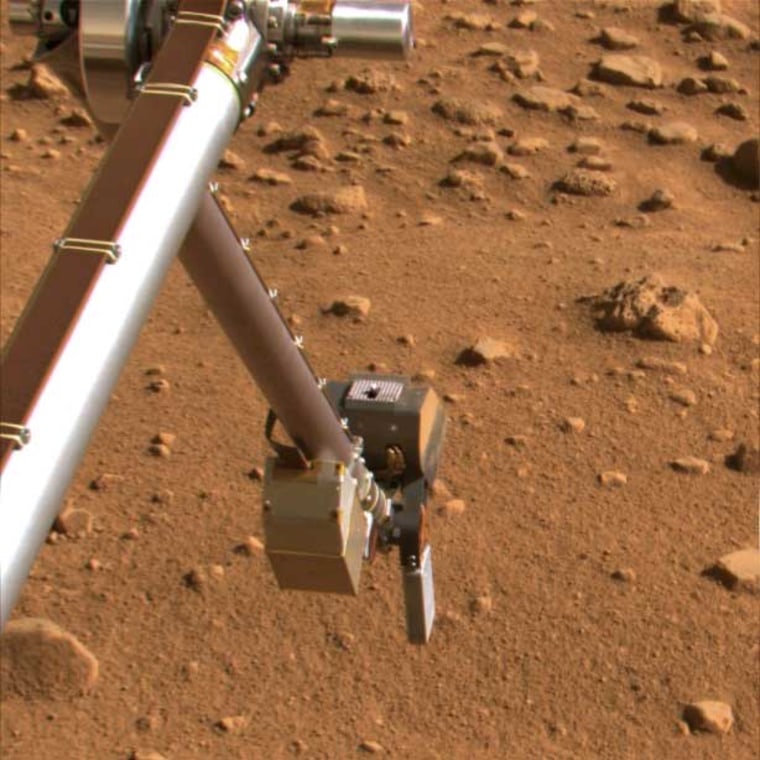NASA's Phoenix Mars Lander has begun using a special rasp tool to shave off bits of the hard icy material on the Martian ground.
The rasp is a motorized tool attached to the back of the lander's robotic arm scoop, which scientists hope will be able to grind enough ice off the ground to eventually use as a sample in Phoenix's Thermal and Evolved-Gas Analyzer (TEGA) oven instrument.
The hard ice beneath the surface in the north polar regions of Mars, where Phoenix landed May 25, has so far been difficult for the probe to dig into, but mission scientists say the rasp may be the tool that helps get the job done.
"While Phoenix was in development, we added the rasp to the robotic arm design specifically to grind into very hard surface ice," said Barry Goldstein, Phoenix project manager at NASA's Jet Propulsion Laboratory in Pasadena, Calif. "This is the exactly the situation we find we are facing on Mars, so we believe we have the right tool for the job. Honeybee Robotics in New York City did a heroic job of designing and delivering the rasp on a very short schedule."
The motorized rasp bit extends from the back of the scoop tool on the end of Phoenix's 2.35-meter-long (7.7-foot-long) robotic arm. The tool works by shaving sideways into the ground, kicking up dirt and ice onto a collection surface in the scoop.
In recent days, Phoenix has used its robotic arm to clear the top layer of dirt from a large swath of ice in a trench it dug called Snow White. Phoenix was scheduled to spend Tuesday rasping into the hard material in two spots at the bottom of the trench. Mission scientists hope in the coming days it will have collected enough ice to transfer to TEGA for a baking experiment to learn more about the ice's composition.
